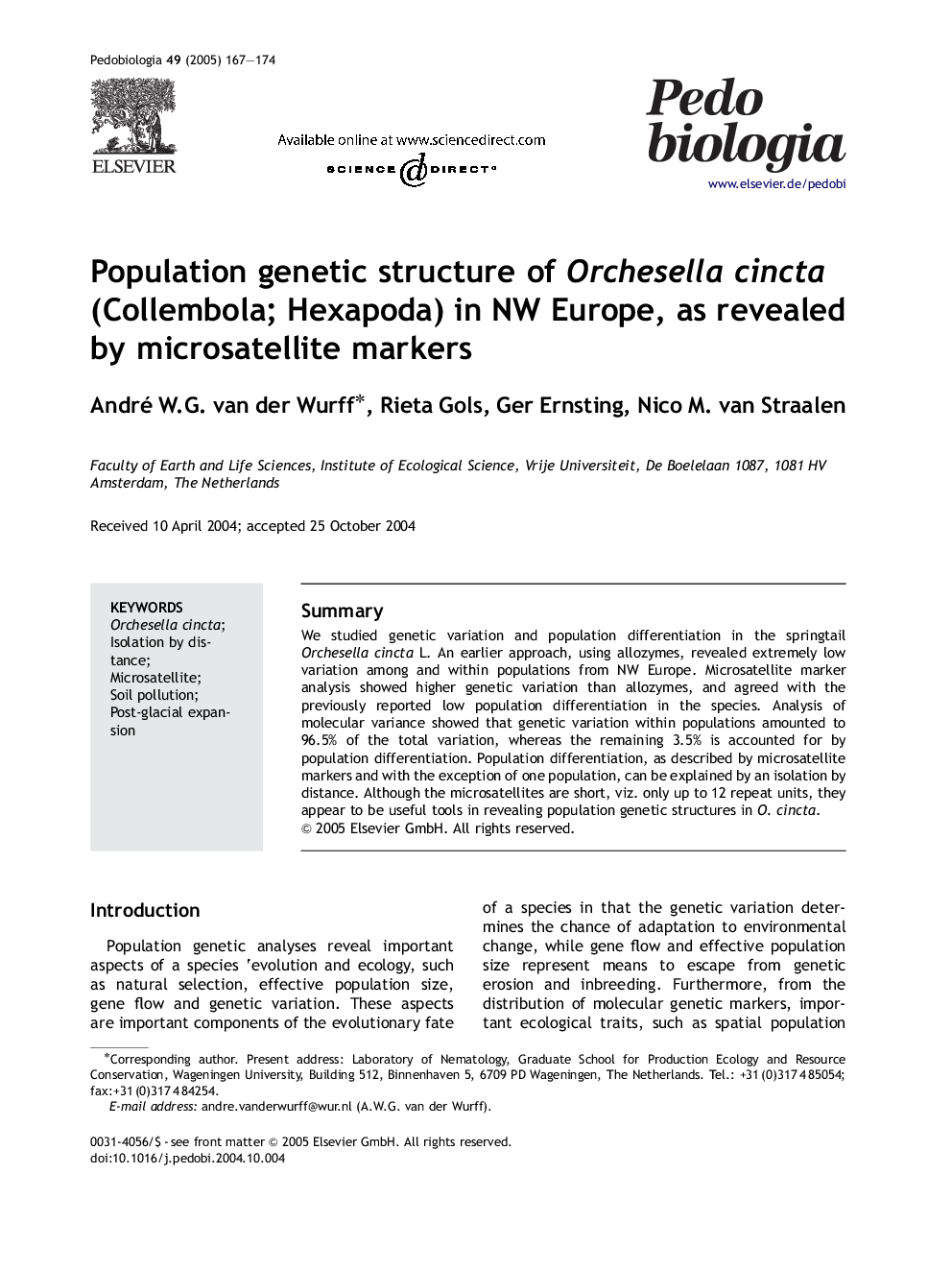| Article ID | Journal | Published Year | Pages | File Type |
|---|---|---|---|---|
| 10878695 | Pedobiologia | 2005 | 8 Pages |
Abstract
We studied genetic variation and population differentiation in the springtail Orchesella cincta L. An earlier approach, using allozymes, revealed extremely low variation among and within populations from NW Europe. Microsatellite marker analysis showed higher genetic variation than allozymes, and agreed with the previously reported low population differentiation in the species. Analysis of molecular variance showed that genetic variation within populations amounted to 96.5% of the total variation, whereas the remaining 3.5% is accounted for by population differentiation. Population differentiation, as described by microsatellite markers and with the exception of one population, can be explained by an isolation by distance. Although the microsatellites are short, viz. only up to 12 repeat units, they appear to be useful tools in revealing population genetic structures in O. cincta.
Related Topics
Life Sciences
Agricultural and Biological Sciences
Animal Science and Zoology
Authors
André W.G. van der Wurff, Rieta Gols, Ger Ernsting, Nico M. van Straalen,
